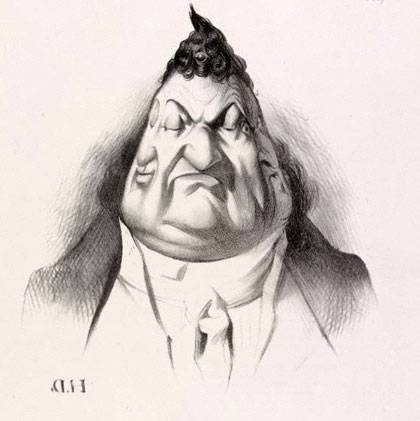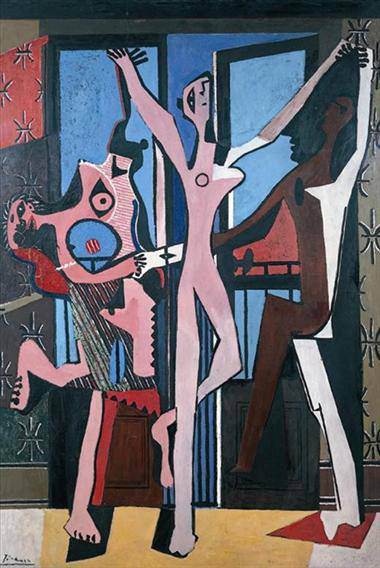
Honoré Daumier
The past, the present, the future. (Le passé. Le présent. L’Avenir.)
La Caricature, Plate 349 (Volume 7, Issue 166, January 9, 1834).
Lithograph.
Francis Alward Eames Fund, 1973.24.7.10.1
Honoré Daumier and La Caricature, 1830–1835 The Cantor Arts Center presents 50 pioneering satirical works by 19th-century caricaturist Honoré Daumier and his colleagues in ‘When Artists Attack the King: Honoré Daumier and La Caricature, 1830–1835’. August 1–November 11, 2012.]]>
Source: Cantor Arts Center
Long before Iranian cartoonist Mahmoud Shokraiyeh was sentenced to 25 lashings for drawing a parliament member in a soccer jersey, 19th-century caricaturist Honoré Daumier and his colleagues at the weekly Paris journal La Caricature endured prison sentences, fines, and litigation for their scathing portraits of king Louis-Philippe I of France, who came to power after the Revolution of 1830.
The exhibition, drawn entirely from the collection of the Cantor Arts Center, also features issues of La Caricature and large Daumier lithographs published for L’Association Mensuelle, a monthly print subscription associated with La Caricature.
The show’s most provocative prints represent the king as la poire, a bulbous pear. But the artists mercilessly lampooned everything about the July Monarchy, as Louis-Philippe’s reign was known—its ministers, their censorship of the press, their role in the inequalities of French society. The tone in the presented works ranges from mocking to outraged: from depictions of government officials as marionettes to the gruesome aftermath of government troops shooting an entire working-class family after a riot.
“Daumier and the other artists at La Caricature were incredible draftsmen, and they all possessed a gift for using wicked humor to cut to the heart of controversial issues,” says Elizabeth Kathleen Mitchell, the Cantor’s Burton and Deedee McMurtry Curator of Prints, Drawings, and Photographs. Daumier especially has been posthumously recognized for his wit and technical skill, which he demonstrated in his more than 4,000 lithographs as well as his sculptures and the paintings he produced later in life before going blind.
Related content
A Light Touch: Exploring Humor in Drawing – exhibition at the Getty Museum (exhibition, 2008)
Follow us on:


